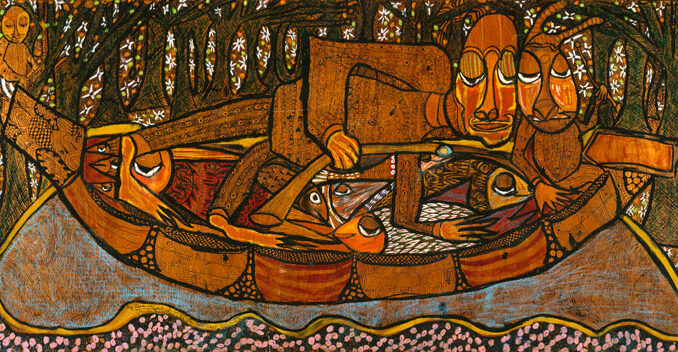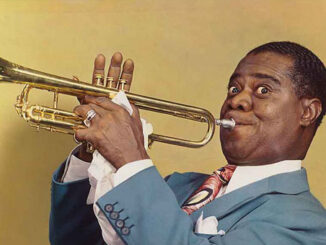
Edwin Buggage Editor-in-Chief Data News Weekly
New Orleans: A Unique Cultural Gumbo
The connection between New Orleans and the Continent of Africa is the roux that gives the City of New Orleans its unmistakable flavor. It can be seen in the syncopated rhythms of the second-line and in jazz, funk and bounce. It can also be seen in the colorful plumes which adorn the Mardi Gras Indians’ suits and tasted in our world-class cuisine. This city, with its distinctly unique gumbo of many cultures, has fused into a destination where people from around the world desire to visit and experience. For it is truly the most African influenced city in the United States.
 “Similarities exist in much of the work of New Orleans and its artistic traditions and culture, and its connection to larger Diaspora,” says Ndubuisi Zolimomab, exhibition co-curator and the New Orleans Museum of Art’s former Francoise Billion Richardson Curator of African Art and presently Curator of African Art at the Virginia Museum of Fine Art.
“Similarities exist in much of the work of New Orleans and its artistic traditions and culture, and its connection to larger Diaspora,” says Ndubuisi Zolimomab, exhibition co-curator and the New Orleans Museum of Art’s former Francoise Billion Richardson Curator of African Art and presently Curator of African Art at the Virginia Museum of Fine Art.
Continuing, he remarks about his excitement to curate this exhibit, “When my colleague brought the idea of this show, I jumped right in. When it comes to New Orleans, it is a city full of color and splendor that is part of the everyday life of the people. Color express ideas, that is what New Orleans was like when I lived here. I found a home here.”
NOMA: A Commitment to Displaying African and African American Art
Recently, the New Orleans Museum of Art (NOMA) has been intentional in displaying the art of African Americans and Africans in the Diaspora. Presently, there is an amazing exhibit on display entitled: “Black Orpheus: Jacob Lawrence and the Mbari Club.” It is an exhibition exploring the creative exchange between Artist Jacob Lawrence and members of the Mbari Artist & Writers Club, a Nigerian Collective founded in 1961. They also produced a cultural magazine, “Black Orpheus” (1957-67) that spread their work across the globe.
“Co-organizing and presenting ‘Black Orpheus: Jacob Lawrence and the Mbari Club’ reflects the New Orleans Museum of Art’s commitment to expanding and diversifying public appreciation of African and African American art,” says Susan Taylor, Montine McDaniel Freeman Director of the New Orleans Museum of Art.
A Wider Lens: Jacob Lawrence and the Mbari Club
This exhibition marks the first time in more than five decades that Lawrence’s little-known Nigeria Series will be seen in its entirety. The exhibition will be on review until May 7, 2023.
“There is a lack of scholarship surrounding art and the post-colonial period and the impact of this work on generations of artists in Africa and internationally, a gap we want to address with this exhibition,” says Ezeluomba.
These works are of historical significance, given the 1960’s there were independence movements across the African Diaspora and the Civil Rights Movement in the United States. Along with that came the collective demands for self-determination and empowerment. Additionally, there came a rise in consciousness and works of art reflecting the spirit of the times, where the spirit of Sankofa, and where learning from the past to build the future was evident in the post-colonial African Diaspora.
This exhibit is an important bridge connecting people in Africa and the Diaspora, something that continues today, where there is a renewed interest in Pan-Africanism. “I believe Jacob Lawrence’s works being exhibited side-by-side with the Mbari Artists give them an audience to see the significance and relevance of their work as well. Secondly is to educate the audience that what was happening in America in the 1960’s was happening all over the world. People rising up and having their voices heard and expressing themselves and examining themselves by their own cultural standards.”
Ezeluomba, closes by speaking of the importance of his role as a curator and the intentionality of museums like NOMA and others to include programming that showcase African Diasporic Art that can educate, inform and inspire people to better understand our collective humanity.
“Art is something that tells the story of people, and it is necessary for the insertion of programming that explores the African Diaspora, not in ways that are oversimplified, but in the complex ways that display all of humanity. I believe this exhibit begins this journey and is a step in the right direction.”
Recommended For You.






Be the first to comment